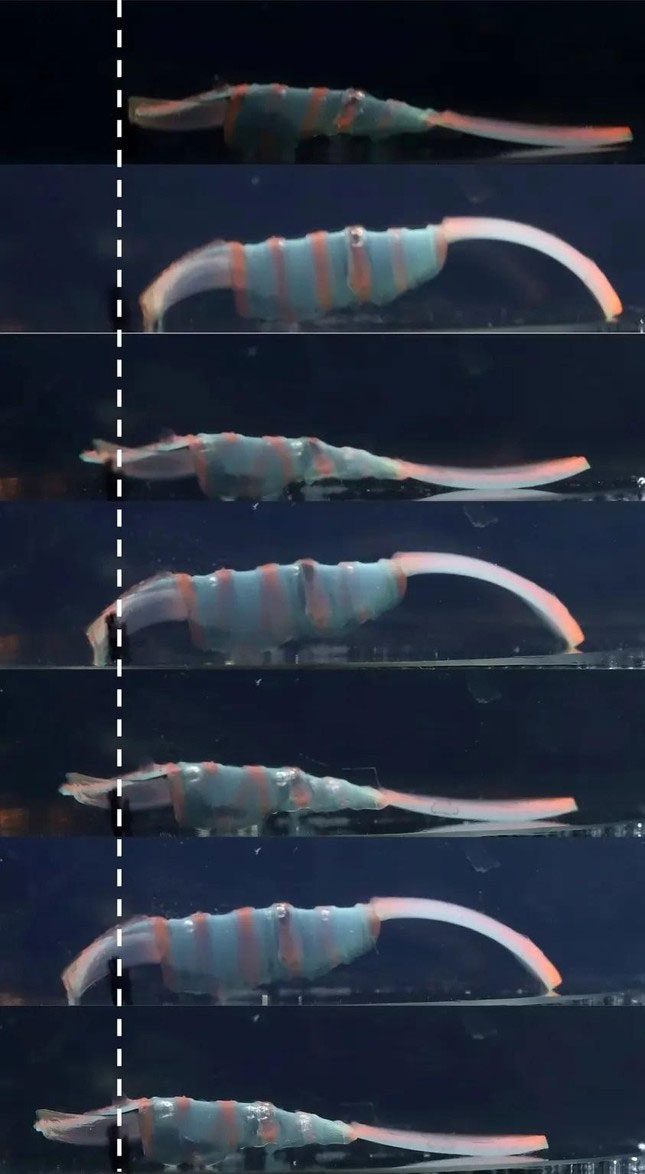Scientists have created a tiny robot resembling a super small cow that they hope will travel through the human body to treat diseases.
Made from gelatin, this device is 3D printed and could eventually replace pills or intravenous injections.
“Gelbot” – powered by temperature changes similar to a type of fruit-flavored gum, is completely different from robots typically made of hard materials like metal and plastic.

This device can replace pills or intravenous injections.
Gelbot Moves Throughout the Body Without Batteries or Any Power Source
The lead author of the study, David Gracias from Johns Hopkins University in the U.S., stated: “It seems very simple, but this is a moving object that doesn’t need batteries, doesn’t require wires, and doesn’t rely on any external power source – only on the swelling and contracting of the gel.”
“Our research demonstrates how the shape, size, and style of the gel can be adjusted for movement,” Gracias added.
Previous studies have shown that gel that swells or shrinks in response to temperature can create smart structures.
Scientists are discovering that they can move the robot forward and backward on flat surfaces, as well as in certain directions with a wave-like motion.
They hope these devices could deliver medication directly to tumors, blood clots, or infections. It will hold onto the medication until it reaches its target, unlike swallowed pills or injected liquids.
Cost-Effective and Mass-Production Friendly
Another advantage is that this robot is inexpensive and easy to produce in large quantities. They could change how doctors examine patients and serve as minimally invasive devices for diagnosis and biomedical treatment.

Unlike swallowing pills or injecting liquids, the Gelbot will hold onto the medication until it reaches its target to release a concentrated dose.
Unlike swallowing pills or injecting liquids, Gelbot will retain the medication until it reaches its target.
Beyond the human body, they could be used as maritime robots to patrol and monitor ocean surfaces to combat pollution.
Gracias, a professor of chemical engineering and molecular biology, is planning to train Gelbot to respond to variations in human biology and biochemistry. He is also looking to experiment with shapes inspired by caterpillars and other marine organisms, while placing cameras and sensors on their bodies.
Also this year, scientists created a Transformers-style robot inspired by Japanese origami art. Similar to Gelbot, they will deliver drugs directly to tumors, blood clots, or infections and investigate activities inside the body.
In 2020, researchers at Cornell University revealed that they were working on developing tiny machines with legs that could move inside the human body.


















































